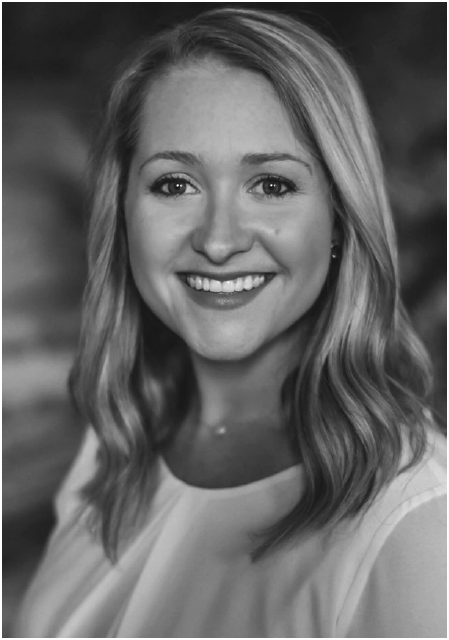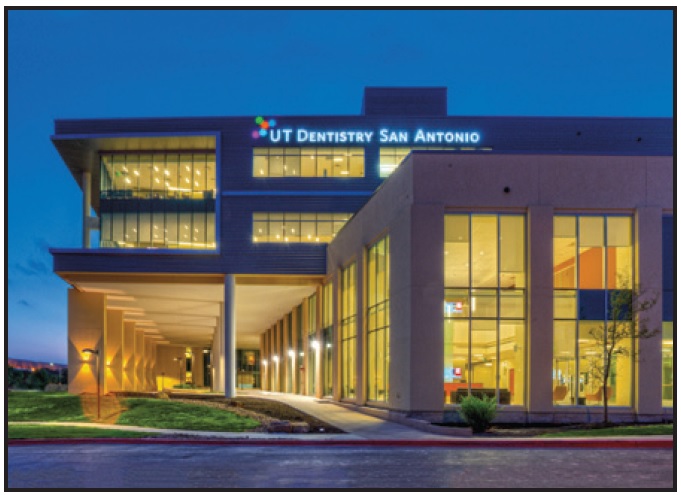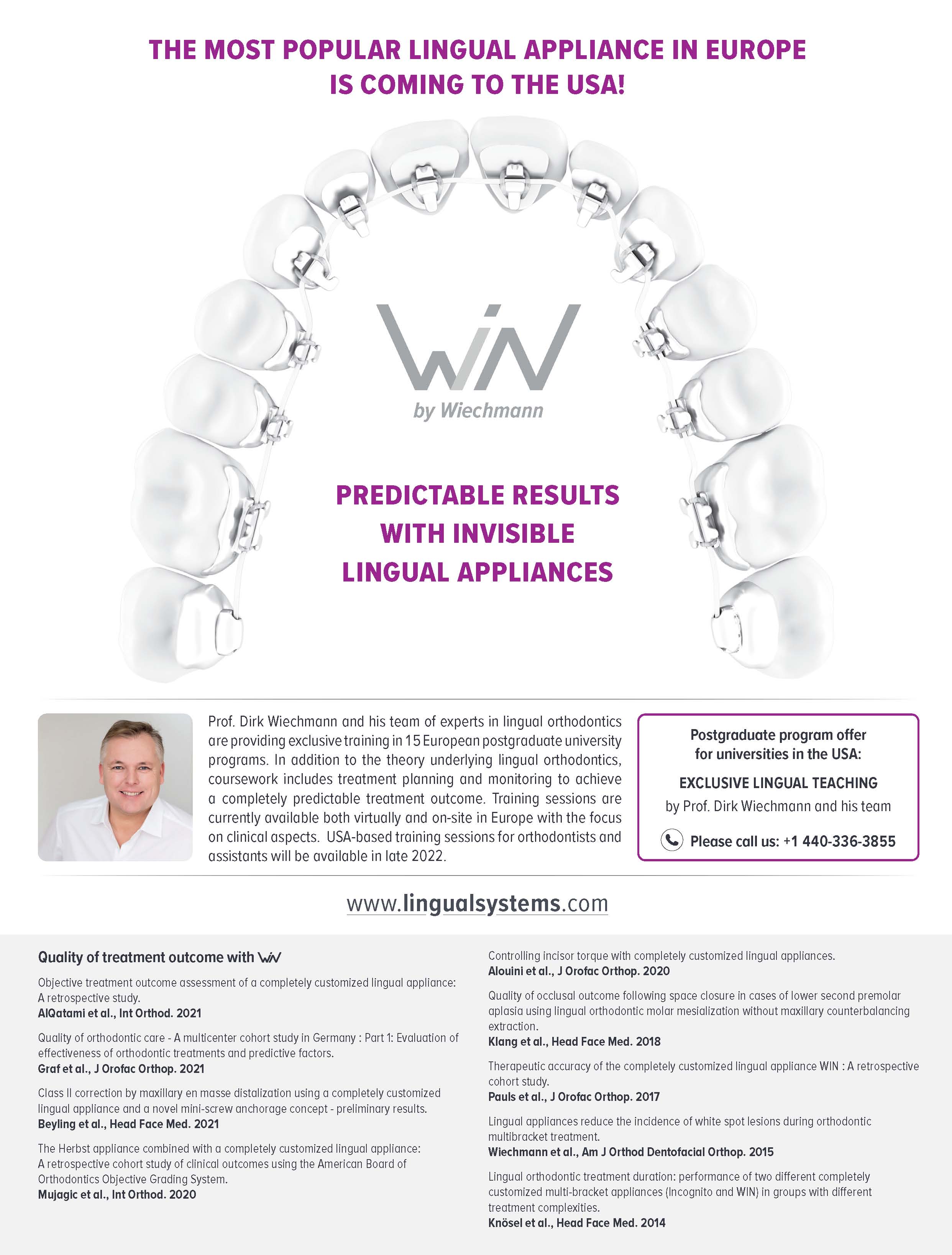2022 Eugene L. Gottlieb JCO Student of the Year: Dr. Shelby Steffenhagen
The Journal of Clinical Orthodontics is pleased to name Dr. Shelby Steffenhagen from the University of Texas Health San Antonio as the winner of the 2022 Eugene L. Gottlieb JCO Student of the Year Award, presented by American Orthodontics. Dr. Steffenhagen was selected over 23 other students from schools around the United States in a two-stage, months-long competition judged by members of the JCO editorial board. Her prize includes more than $8,000 worth of materials and travel from American Orthodontics, JCO, and Dolphin.
Dr. Steffenhagen is the seventh Student of the Year award winner, joining Dr. Amanda Gross of Texas A&M University (2021), Dr. Saro Atam of Stony Brook University (2020), Dr. Katya Skillestad of Texas A&M University (2019), Dr. Samaneh Mojarrad of the University of Pennsylvania (2018), Dr. Moataz Elmahdy of the University of Rochester (2017), and Dr. Krystian Jarosz of Rutgers University (2016).
Any U.S. orthodontic department was eligible to nominate one current student by submitting two letters of recommendation and the student’s personal essay. Each student was then given the materials from an unpublished case and asked to write a complete treatment plan, including all possible alternatives, within two weeks. Three JCO editorial board members narrowed the initial group of 24 nominees down to 12 finalists in December. In the second stage, each of the finalists submitted an ABO-style case report. Moderated by JCO’s former Editor-in-Chief, Dr. Robert Keim, the judging panel included Dr. Neal Kravitz of South Riding, Virginia; Dr. Michael Meru of Thousand Oaks, California; Dr. Sarah Shoaf of Winston-Salem, North Carolina; and Dr. Peter Sinclair of Los Angeles.
As in past years, the judges were highly impressed by the quality of submissions. JCO is publishing Dr. Steffenhagen’s “Nonextraction Treatment of Ectopic Upper Canines” as an online-only article in this issue. All 12 finalists will be featured on our Facebook page in the coming months.
Congratulations to Dr. Steffenhagen and the University of Texas Health San Antonio! Current orthodontic students and faculty can expect the start of the 2023 nomination process in August.
PHILIP B. VOGELS
VP of Marketing and Business Development
Q&A with Dr. Shelby Steffenhagen
Can you tell us a little about yourself?
I’m Shelby Steffenhagen, maiden name Jones! I was born in Newport News, Virginia, and raised in Choctaw, Oklahoma. My father is a colonel in the Air Force, now retired, currently running the Junior ROTC program at my alma matter, Choctaw High School. My mother is a homemaker, an interior designer, and the warmest soul you’ve ever met. I have one older sister, Nicole, who is a pediatric physician, and one younger sister, Taylor, who is a labor and delivery nurse. From birth to braces, this family has you covered! I met my amazing husband, Cole, when we were in sixth grade. We began dating shortly after our high school graduation and eventually were married in a small ceremony at Yosemite National Park. Growing up, I was a competitive dancer, and I still enjoy dancing any chance I get. I also love painting, meditating, reading, relaxing into a yoga flow, listening to a great album, cuddling with my puppy, and dissecting the themes of a good film.
Why are you pursuing a career in orthodontics?
I would say I have a passion for connecting with people and helping them to feel seen. Orthodontics is this beautiful amalgamation of science and art, allowing for both critical thinking and fluid creativity. Through the journey of providing patients with their healthiest smile, I find so much joy in also facilitating their inner growth through increased self-confidence and self-embodiment. I love seeing patients for their individual beauty, and it is the greatest reward when I can help patients see that in themselves as well.
Can you describe the path that led you to the University of Texas Health San Antonio?
Moving this Oklahoma girl out of state was not in my comfort zone, but the second I left my interview, I knew it was the right place for me. I just had to listen to that feeling.
The application, interviewing, and matching process is overwhelming. My advice to all applicants will always be to “just be yourself.” If you lean in to your own alignment, you will find the residency that aligns with you.
What has surprised you the most during your orthodontic education?
That wirebending can be kind of therapeutic!
What has been the most difficult part of becoming an orthodontist?
I would say the resiliency that is required for any specialty or for the mastery of a skill is difficult. It takes a lot of time, energy, discipline, and patience. The process can be discouraging at times, but one day you wake up, and it isn’t that hard anymore. You just have to keep going, keep learning, and keep growing.
What, so far, has been your most rewarding orthodontic experience?

Dr. Shelby Steffenhagen

University of Texas Health San Antonio School of Dentistry (photo courtesy of University of Texas).
“I just want to say thank you from the bottom of my heart. For almost two weeks now, he has been smiling without reservation or even thinking about it. In my son’s smile I can see he is no longer a prisoner of insecurity due to his teeth. Thank you, you have given him more than you will ever know.”
This is a message I received from the mother of a Phase I patient I treated. Not a difficult treatment, no fancy biomechanics to show off, but the effect that this simple treatment had on the patient’s life is the best reward I could be given. That is what the orthodontic profession is about.
What has been your most difficult case so far?
There is an impacted upper canine that I have been pulling on for what feels like my entire residency, and my only hope is that I get to see that tooth (healthy!) before I graduate. Those impacted canines are no joke!
Any research projects you’d like to tell our readers about?
My master’s research project is titled “A Survey of Professional Job Satisfaction Among Orthodontic Specialists in the United States.” I am looking at overall job satisfaction among U.S.-based orthodontists and seeking to identify aspects of the profession that may increase or decrease that satisfaction. I’d like to give a huge thank-you to all the orthodontists who participated in the survey—be on the lookout for the results!
What are your postgraduate plans?
Professionally, I will be joining a practice in Oklahoma City as an associate orthodontist. I am so excited to return to my home state and start serving the community there. Personally, my husband and I are looking forward to settling down on some beautiful land and starting a family.
What do you think orthodontics will look like in 10 years?
I think it will continue to diversify in terms of the treatment options we can provide to our patients. From simple aligners for the patient seeking to close a diastema to the surgical patient requiring orthodontics to improve function and quality of life, I believe there will be an option for everyone to benefit from treatment. I hope that as a profession, we continue to make proper orthodontic care accessible for the entire population, no matter their social or financial standing.
Rapid-Fire Round
How can orthodontists thrive in today’s competitive marketplace, particularly with the increase in dentists offering various forms of orthodontics?
Put the patient first, and let your work speak for itself.
Social media: Should it be a major tool in an orthodontist’s marketing arsenal?
“Do your work, and then step back.” —Lao Tzu
The greatest marketing tool you can have is an excellent treatment result and a satisfied patient.
Clear aligners: What malocclusions should they be considered or not considered for?
Consider them for anything, but be realistic in what results you can achieve.
TADs: Are we moving toward too much TAD usage, or will applications continue to increase?
TADs are awesome when they are indicated, but they shouldn’t be used as a replacement for diligent biomechanics. Not all patients will consent to bone screws, nor should they be needed in many cases.
Extraction: Where do you stand on the debate?
Sometimes teeth need to go, and sometimes they don’t. Be realistic, understand the boundaries and when you can push them, and know that there is no such thing as a one-size-fits-all treatment plan.
Retention: Should patients always be pushed toward permanent retention, and how long should we continue to see them on recall visits?
In my opinion, permanent retention should be advised in cases that are severely prone to relapse, but it should not be a catch-all for every patient. Some patients need it; some don’t!
Phase I treatment: Overused, underused, or properly used?
I can’t speak to the overall trend, because I think the answer would be “all of the above,” depending on where you look. I’ll say that Phase I treatment can be of great benefit for some patients, but it should be kept as minimally invasive as possible and only initiated if there is, in fact, a benefit to the patient at that time.
Accelerated orthodontics: What does the future hold?
More research, more advancements, and more options for patients.



COMMENTS
.